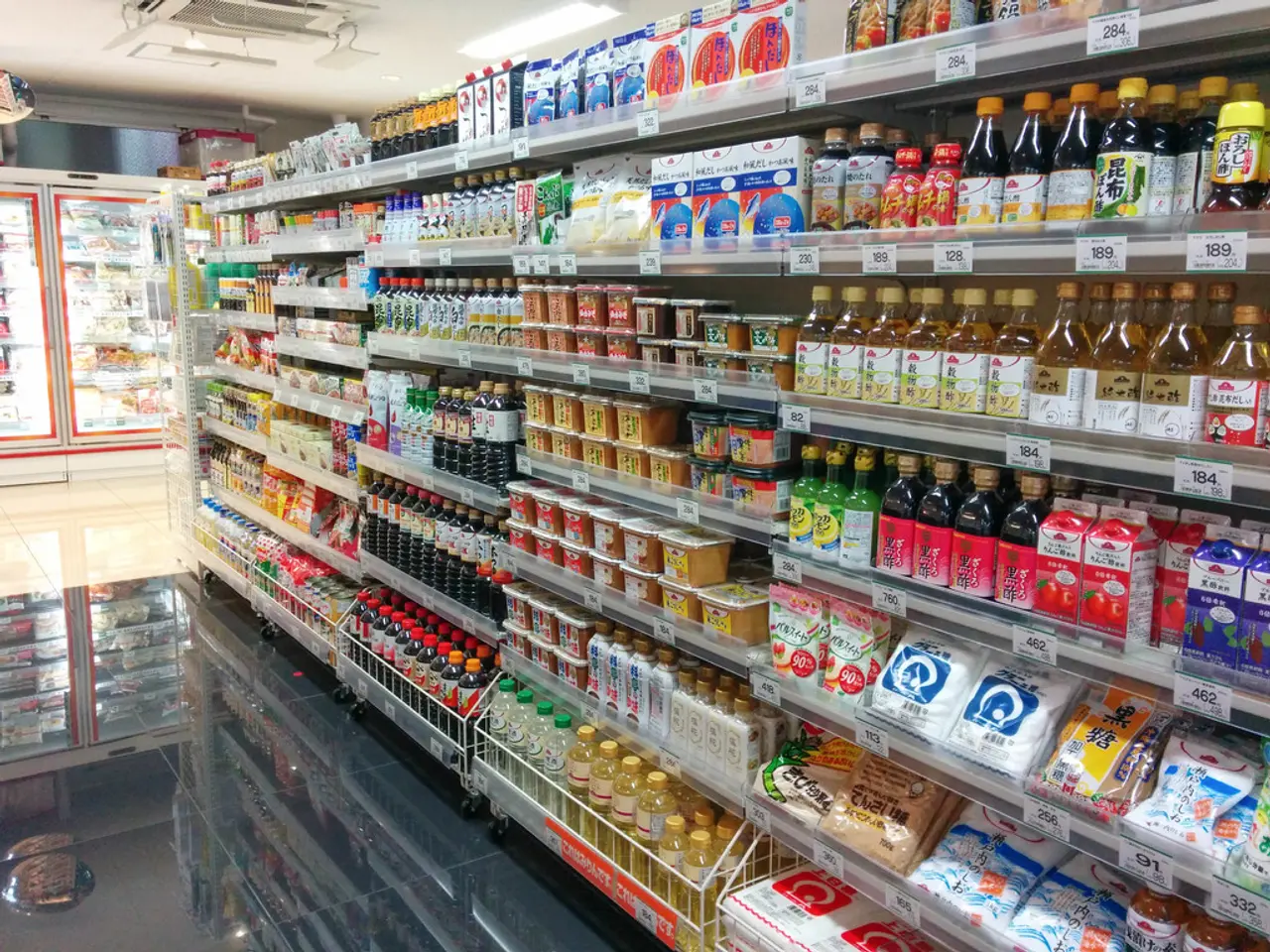American corporations primarily shoulder the financial burden of tariffs
=====================================================================================
In a bid to maintain price stability and market share, major U.S. companies like General Motors, Walmart, and Home Depot have been absorbing tariff costs on imported goods. However, this strategy is not sustainable beyond several months without impacting profitability or leading to higher consumer prices.
The short-term absorption strategy helps contain immediate inflation but reduces funds for research, development, and reinvestment, risking long-term corporate health. Companies are building inventory before tariff implementation to delay cost impact, especially for durable goods with longer shelf lives like auto parts and appliances. This buffer can last around five months but varies by sector and product expiration risks.
Thin-margin industries with high import exposure absorb tariffs more noticeably, facing squeezed profits and future sustainability challenges. Larger retailers like Walmart have some pricing flexibility but also incur trade-offs like inventory cuts or selective modest price increases to manage impacts.
General Motors, for instance, has reported a 35% reduction in net income due to tariffs. The automaker has absorbed extra costs to preserve its market share, but this has resulted in a $1.1 billion loss in its second-quarter profit. Walmart has acknowledged rising input costs due to tariffs but has absorbed these expenses to avoid pushing the burden onto shoppers. Home Depot has stated it will absorb all tariff costs as long as it can.
The tariffs on textile and clothing imports from Southeast Asia, electronics, and household goods from China, Vietnam, and the European Union have been driving up prices. Consumers are experiencing increased prices for everyday items like jeans, shirts, activewear, and electronics due to the added duties. Tariffs on steel and aluminum have also increased costs for appliances and furniture, particularly those made with imported parts.
Some retail economists predict American retailers may be forced to add at least some of the cost of tariffs to the price consumers pay in the second half of 2025. Economists warn that by late 2025, these tariff-related pressures may push more costs onto consumers, potentially fueling a fresh wave of inflation.
In a positive development, the U.S. and Japan have agreed on a trade deal, reducing tariffs on Japanese goods from 25% to 15%. Japan will provide $550 billion in loans and investments to the U.S. as part of this deal. This move will benefit U.S. companies that import from Japan, potentially increasing their profit margins.
In summary, U.S. companies can temporarily absorb tariff costs, leveraging inventory and cost management to shield consumers, but this practice imposes significant financial strain and is not sustainable beyond several months without impacting profitability or leading to higher consumer prices. The inflationary effects of tariffs have not been greater due to some retailers absorbing the added costs, but consumers may face increased prices in the near future.
- As companies absorb tariff costs on imported goods to maintain market share, it becomes crucial for them to manage their finances wisely, ensuring that these costs do not hamper their ability to invest in research, development, and reinvestment for their business's long-term health.
- The absorption of tariff costs on goods like auto parts and appliances by companies like General Motors, Walmart, and Home Depot, although beneficial in the short-term for containing immediate inflation, can lead to a reduction in their profit margins, which is a significant concern for the finance aspect of their business.




